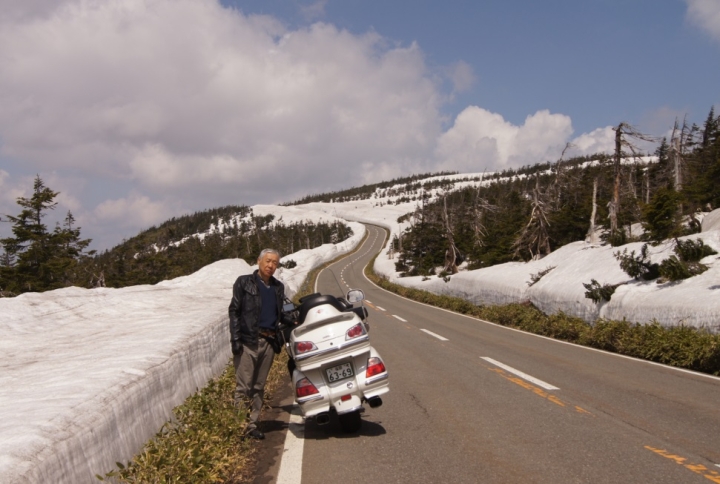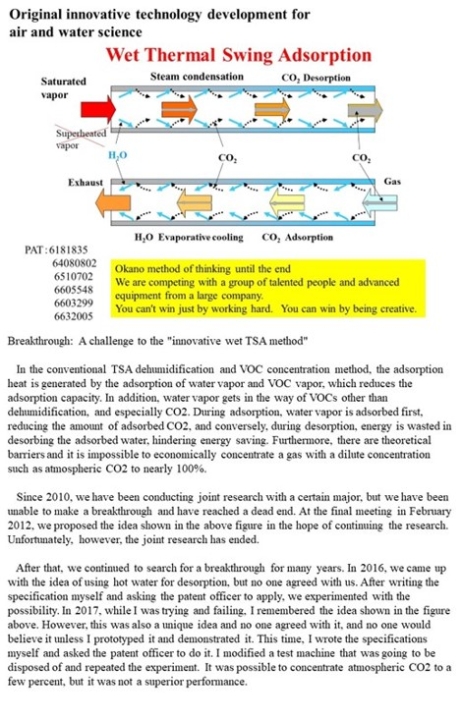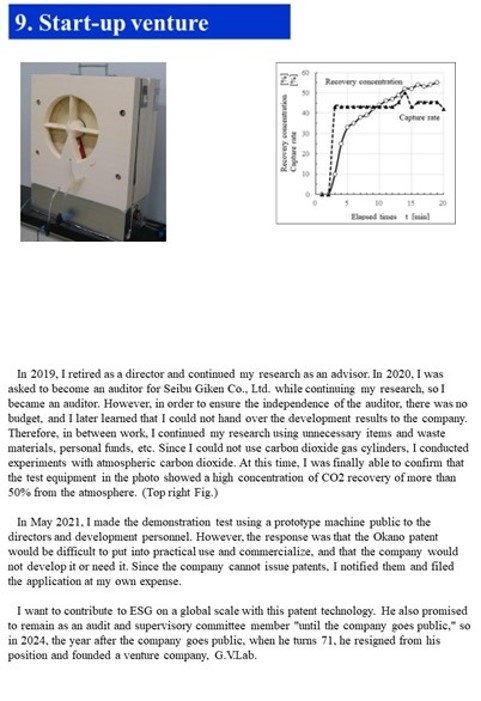Challenge to separate CO2 from air
・From around 2004, I researched the separation of CO2 from air as an advanced version of desiccant air conditioning. I also researched CO2 capture from exhaust gases such as combustion furnaces in order to expand my technical knowledge.
Joint research
・Since 2010, I have been conducting joint research with a major company overseas, but it has been difficult...
In the final meeting in February 2012, I proposed the newly invented "Basic principles of Wet-TSA" (Fig.1), but unfortunately the joint research ended.
After that
・In 2019, I retired as a director and continued my life's work of CO2 separation, concentration, and capture research as an advisor.
・In 2020, I was asked to become an auditor for Seibu Giken Co., Ltd. while continuing my life's work, so I became an auditor. However, I later learned that there was no budget to ensure the independence of the auditor, and that the development results could not be handed over to the company. So, while working as an auditor, I continued my life's work of researching carbon dioxide capture technology in my spare time using the company's unnecessary and waste materials, my personal funds, etc. Since we couldn't use a carbon dioxide cylinder, we experimented with atmospheric carbon dioxide.
Breakthrough
・In 2021, we finally achieved a breakthrough in separating and concentrating CO2 from the air with Wet-TSA.
In May, we showed the company a demonstration test using a prototype (Fig.2). However, they responded that the Okano patent would be difficult to put into practical use and commercialize, that DAC was not economically viable, and that the company would not develop it or need it. The company would not issue patents, so we notified them and filed at our own expense.
Starting a G.V.Lab.
I want to contribute to ESG on a global scale with this patented technology. I also had a promise to remain a director and audit committee member (a system transition from an auditor) until the company went public, so in 2024, the year after the company went public, when I turned 71, I resigned from my audit committee position and started a venture.



